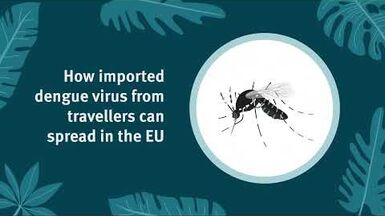Epi update: Increase in number of human cases of variant influenza A(H3N2)v virus infection in the United StatesArchived
Since July 2011, 155 cases of the variant influenza A(H3N2) virus (A(H3N2)v) have been detected in the US: Hawaii (1), Indiana (113), Iowa (3), Maine (2), Ohio (30), Pennsylvania (3), Utah (1), and West Virginia (2). Most cases reported in Indiana and Ohio are recent cases. No human to human transmission has been determined among these recent cases.
Since July 2011, 155 cases of the variant influenza A(H3N2) virus (A(H3N2)v) have been detected in the US: Hawaii (1), Indiana (113), Iowa (3), Maine (2), Ohio (30), Pennsylvania (3), Utah (1), and West Virginia (2). Most cases reported in Indiana and Ohio are recent cases. No human to human transmission has been determined among these recent cases [1-3].
The recent increase in number of cases is consistent with the conclusions of the ECDC risk assessment published in November 2011:
- Sporadic infections and even localized outbreaks of A(H3N2)v infection among people will continue to occur in the US.
- While there is no evidence at this time that sustained human-to-human transmission is occurring, all influenza viruses have the capacity to change and spread widely.
- This variant causes only mild disease. Patients hospitalised had underlying conditions and they all recovered completely.
- This variant is susceptible to the neuraminidase inhibitors (oseltamivir and zanamivir) though the current A(H3N2) component of seasonal influenza vaccines is unlikely to provide protection. Older people are likely to have some protection from exposure to earlier vaccines.
- Overall, the immediate threat to human health is currently assessed as low in Europe.
ECDC is following the situation closely and is in direct contact with the WHO, the US CDC and relevant experts in EU Member States. ECDC and the Community Network of Reference Laboratories (CNRL) have worked to assess and strengthen laboratory capacity in Europe for detecting A(H3N2)v should it appear in persons in Europe. The results indicate that the variant viruses would be detected in most EU countries although some laboratories may not be able to subtype and identify the viruses as variant [6]. In this context, all unsubtypable influenza A viruses need to be rapidly referred to the WHO Collaborating Centre for Reference and Research on Influenza, National Institute for Medical Research, London, UK.
ECDC is currently reviewing its risk assessment and the state of preparedness in the EU.






